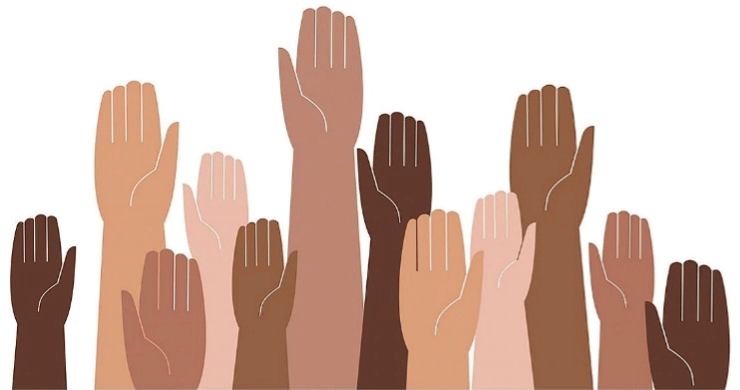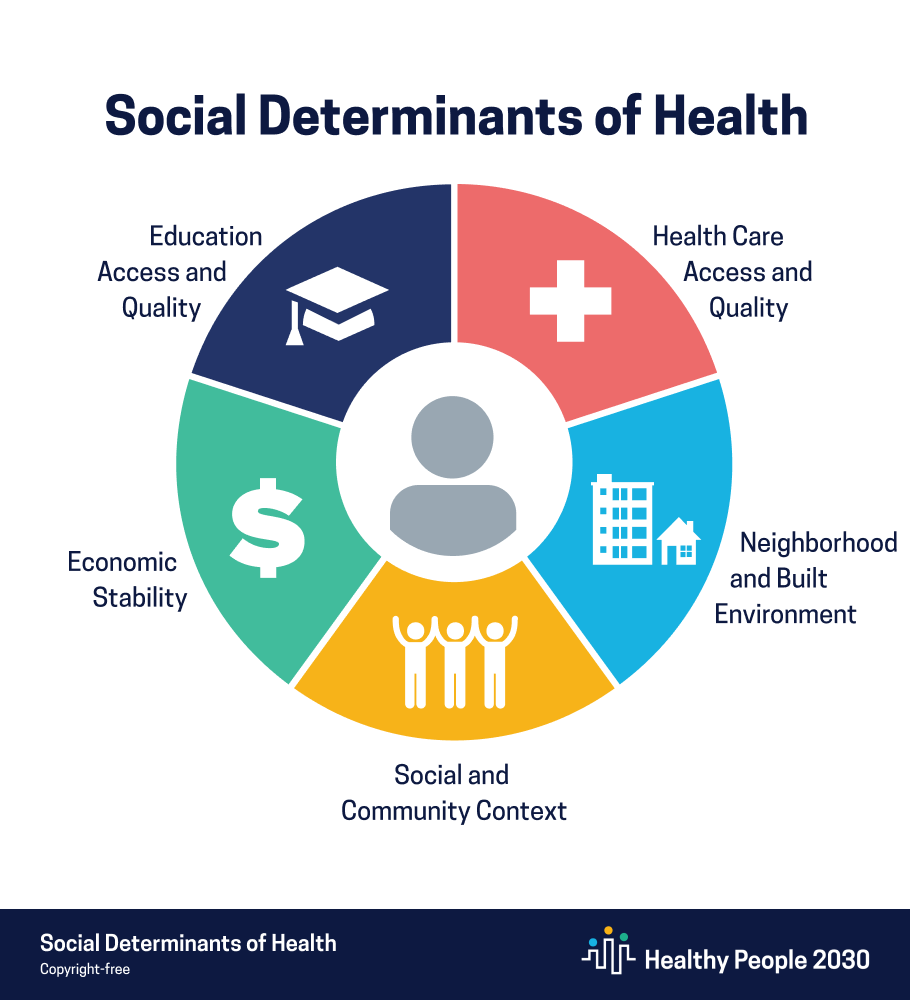To provide culturally responsive healthcare services, clinical staff, and organizations need to become aware of their own attitudes, beliefs, biases, and assumptions about others. Providers must learn about the cultural backgrounds of the populations they serve and obtain specific cultural knowledge as it relates to help-seeking, treatment, and recovery (SAMHSA, 2016).
Cultural competence training can improve patient satisfaction. In some circumstances, patients whose providers completed training report better opinions of their clinicians or participate longer in mental health counseling than patients whose providers did not (UW, 2020).
3.1 Cultural Competence
It is (an individual’s) health views, needs, and experiences that matter when making an informed decision, not a patient’s ethnicity, race, or social status.
Togioka et al, 2022
Diversity and Discrimination in Healthcare

Source: NIH, public domain.
Cultural competence is a lifelong process that encourages healthcare providers to integrate knowledge into standards, policies, practices, and attitudes. The goal is to improve the quality of services—thereby producing better outcomes. Cultural competency evolves over time, allowing providers to work effectively in cross-cultural situations (NPIN, 2021).
Providing culturally appropriate care creates a healthcare system and workforce that can deliver accessible and effective healthcare regardless of a person’s background. It recognizes that health is inseparable from cultural perceptions of wellbeing (Liu, Miles, and Li, 2022).
3.2 Diversity
Broadly defined, diversity is the inclusion of varied attributes or characteristics. Diversity education encourages providers to understand their position of power and privilege in society, develop a critical consciousness*, and recognize their own implicit biases and those of the institutions and systems in which they work (Togioka et al., 2022).
*Critical consciousness: a reflective awareness of the self, others, and the world and a commitment to addressing issues of societal relevance in healthcare.
Diversity training encourages providers consider the unique, individual context of each patient and to remember that a situation may be experienced differently by different patients. It helps providers employ an attitude of curiosity about how each patient’s experiences and culture shape their views and behaviors (Togioka et al., 2022).
There are five key principles associated with diversity training (Ogrin et al., 2020):
- Awareness: understanding unconscious bias and prejudice, self-identifying biases.
- Promotion: focusing on similarities between people rather than differences.
- Embedding: ensuring access and equity in policy and practice.
- Identifying: uncovering individual characteristics that promote participation, sharing decision-making, trust-building, and rapport.
- Understanding: acknowledging the intersectionality of people’s various characteristics.
Efforts to diversify the healthcare workforce have largely centered on individuals designated underrepresented in medicine relative to their numbers in the general population. Several studies examining race/ethnicity at the undergraduate, graduate, and faculty level have reported modest improvements in the proportions of underrepresented racial/ethnic and sex groups within medicine over time. These studies have shown that the medical workforce has indeed become more diverse but have not accounted for the shifting demographics of the U.S. population (Lett et al., 2019).
Most states do not train providers who are demographically representative of the surrounding population. There is mounting evidence that diversifying the workforce to reflect the population served is key to providing high-quality, high-value, culturally effective care (Lett et al., 2019).
Gender diversity is a key part of improving cultural competence. In nursing, the male advantage has been described as a “glass escalator,” in which men are put on a fast track and pushed to achieve positions that include greater responsibility, higher salary, and more organizational benefits. While diversity is necessary and important, equity is also needed to decrease disparities and mitigate the impact of discrimination (Togioka et al., 2022).
The lack of gender diversity is also evident in management positions. For example, more than half the pediatricians and gynecologists in the U.S. are now female, yet department leaders remain predominantly male. Men are more likely to be selected for editorial board membership and achieve status as an associate or full professor, department chair, or medical school dean. Men also earn more at each academic rank (Togioka et al., 2022).
3.3 Social Determinants of Health
Healthy People 2030 defines social determinants of health (SDOH) as “the conditions in the environments where people are born, live, learn, work, play, worship, and age that affect a wide range of health, functioning, and quality-of-life outcomes and risks.” SDOH form the dynamic context for what we experience in our everyday lives. They are not abstract concepts—they are our life circumstances (Reed, 2022).
Social determinants of health are often grouped into 5 domains (Healthy People 2030, 2022):
- Healthcare access and quality
- Neighborhood and the built environment
- Social and community context
- Economic stability
- Education access and quality
Resources that enhance quality of life, such as safe and affordable housing, access to education, public safety, availability of healthy foods, local health services, and environments free of life-threatening toxins can have a significant influence on population health outcomes.

Social determinants of health are often grouped into the 5 domains illustrated above. Source: ODPHP. See References for citation and web address.
Oppressive systems dictate which people have access to key resources that determine health. Racism and classism create conditions where people of color, those living in poverty, and other marginalized groups have limited access to resources that impact health (Julian, Hardeman, and Huerto, 2020). Income, education, employment, and housing contribute to 50% of the variability in the length and quality of life and are largely responsible for many observed disparities in health (Towe et al., 2021).
The data are hard to ignore (Towe et al., 2021):
- Black Americans are 5.1 times more likely than White Americans to be incarcerated.
- Black Americans earned 61 cents for every dollar White Americans earned (Hispanic Americans earn 74 cents), disparities which have remained largely unchanged over the last several decades.
- Lower income people are more likely than higher income people to lack access to care and have poorer self-reported general health.
Most Americans are unaware of these health gaps, do not understand what causes them, and do not necessarily find them to be unfair. A survey conducted in 2008–2009 based on a national sample showed that most respondents (73%) were aware of health differences between the poor and middle-class people, but less than half (46%) reported awareness of health differences between White and Black Americans. Additionally, many Americans placed the responsibility for these outcomes on individual behaviors such as smoking, diet, and exercise, as well as access to clinical care as the primary drivers, and less so social determinants of health (Towe et al., 2021).
